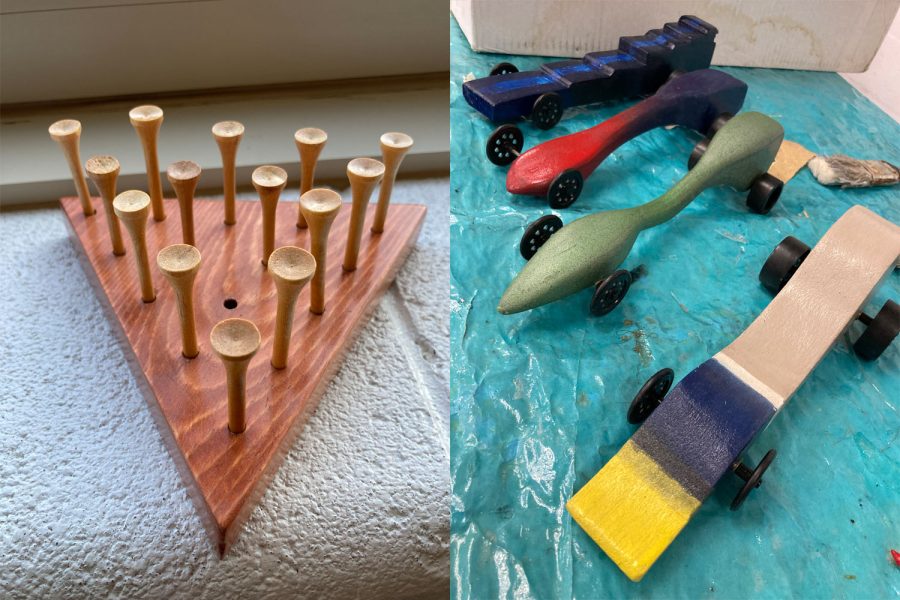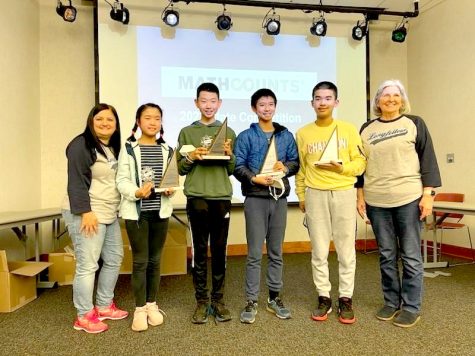Engineering Students Learn Hands-On Skills
The peg game and CO2 cars are two of the projects completed in the Engineering class.
Longfellow is one of the few middle schools left that still has a traditional wood shop. Officially called Engineering, the class is more commonly referred to as Shop. The curriculum ranges from drawings to making mini race cars. The ability to build something by hand is an important life skill and is the reason a lot of students take this class.
“You don’t need to have any pre-set skills, you can come in knowing absolutely nothing,” said Engineering teacher Susan Boomer. “They learn things that will help them in this world, but also just when they are at home, just to be able to put something together.”
Before students get their hands on the tools, they need to learn the basics. In the first quarter of Engineering, each student is assigned to make very detailed drawings to lay out the structure for their builds. These builds should be very detailed because they use the skill throughout the quarter.
Shop student Arnav K. called the drawings “very tedious,” but Ms. Boomer says it is an important foundation.
“To create your own project, like any manufacturer might do, it has to be drawn somehow, either by computer or pencil and paper. I think that is a good skill to have,” Boomer explained. “And that will allow students to create their own thing, whatever that might be.
Once students have mastered drawings, they need to learn how to use the tools. The woodworking project is the students’ first chance to get their hands on the tools. They learn to use the drill, making their own “peg game,” the kind you find at Cracker Barrel.
The task requires measurement skills, as the holes in the base need to be equidistant apart, and the right depth to support the golf tees without drilling all the way through. Students also cut the wood for the block and learn to sand and stain the final product.
“Working with power tools is a very fun and a different experience,” said 8th grader Vicki P.
“It feels like you’re not even working, and makes so many more things possible.”
Students get to work with band saws, drills, and power sanders. They must get 100% on the safety test for each machine before they are allowed to use any of them.
Everyone’s favorite project is the Co2 race car. The small and light model car is powered by pressurized air in the form of a Co2 canister on the back The first step to making the car is doing research for inspiration on the car design by looking at examples from the world of Co2 racing online.
“I took inspiration from a national championship, so the design worked well and my car was very fast,” said Vicky.
Once you’ve decided on a design, you draw a plan, showing what’s on the side and the top of
the car. Once Ms. Boomer approves your design, you tape your drawing on a styrofoam replica, and you use the bandsaw to cut out the shape of your car. The styrofoam is basically for practice.
When you’re done with that you do it again with wood. Small hooks on the bottom of the car attach to a string that keeps the car on course once you’ve started the race. The project ends with one-on-one races where students can celebrate their work. Students feel a sense of accomplishment after seeing their cars race across the hallways.
This class is a great hands-on experience, and students learn real-life woodworking skills. They put their new skills and their creativity to the test. This class is a fun, innovative, and interactive elective that many students enjoy.







